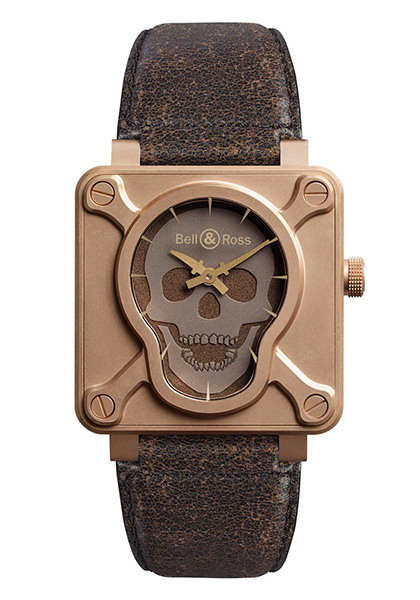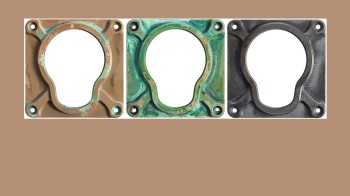The time when pewter and silver cases were commonly found in pockets and on wrists are long gone. The 20th century witnessed the rise of steel as the universal, virtually ideal material. It is resistant to corrosion, shocks and scratches, and is remarkably effective given its price (and provided it is treated with a modicum of respect, of course). Towards the end of the century, steel was joined by titanium, which is even harder and more stable. Gold has continued to play the role it has enjoyed throughout history, as a precious, virtually inert metal (although scratch resistance is not its strongest suit). The various forms of plating have remained largely in the category of false economies, because even at a thickness of 20 microns, a layer of gold soon wears thin. And that should have sounded warning bells for watchmakers.
At the turn of the following century, the industry put the cat back among the pigeons. The cat was PVD. According to the marketing claims, it is very hard, highly durable, completely black and impossible to scratch. Except, when faced with the trials of everyday life, it turns out, it does show wear! Yes, at the classic friction points – the crown, bezel and clasp – the PVD coating, however technical it might be, rubs off. What’s more, with some types of PVD, in the event of a shock, the black coating can flake away.

Buy the Alpiner 4 Manufacture Flyback Chronograph?
And that leaves the consumer with two options: make the best of it, or make a fuss. Making the best of it means accepting that your watch has acquired a patina, and, in light of current trends, you could do a lot worse. The problem is that, depending on how the watch is made, the patina might not be particularly subtle. It’s not like tan patches appearing on your brown leather shoes. And it’s not black shading into dark grey, as you might find on the bezel of a well-used dive watch (well used to laboratory conditions, in many cases). Under the black PVD you might find steel or titanium, which could be light or dark.
The other option – making a fuss – would entail asking for a repair, to reinstate your watch’s pristine black coating. The problem is that the coating is not covered by the guarantee, which doesn’t account for normal wear and tear. In any case, PVD can’t be touched up like paint: the entire case has to be changed. So it’s no surprise that brands refuse to do it for free. And we’ll leave it to you to calculate how much it costs to replace the case...

In addition to PVD, another material has recently insinuated itself onto our wrists: bronze. Impossible to ignore the consequences here. Bronze is sold as a material that will inevitably change, turning brown or even green. Its patina is a selling point. The extent to which the appearance of the case will change depends on the precise formulation of the alloy of copper and tin, and in particular its aluminium content, which makes it more or less stable. But the customer is not always told the whole story.
Bronze watches are often sold as diving watches, and they’re equipped with a rotating bezel: however, the insert (the disc that has the numbers) is generally made of aluminium, not bronze. And aluminium doesn’t really age. The same goes for the dial, which is protected from the elements precisely to ensure that it won’t deteriorate. So your watch ends up with a patina, but not everywhere. The case looks like it has been around the block a few times, and the strap too, but the dial is pristine, and the bezel is as bright and clean as the day it left the workshop. The result is a clash of colours and styles. Getting old isn’t always pretty.








